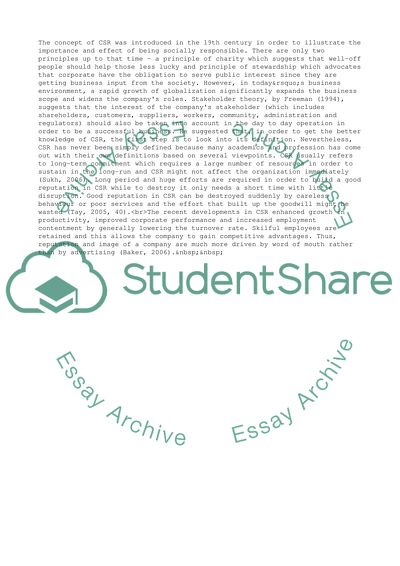Cite this document
(Corporate Social Responsibility in Present Business Environment Research Paper, n.d.)
Corporate Social Responsibility in Present Business Environment Research Paper. Retrieved from https://studentshare.org/business/1744576-critically-appraise-the-developments-challenges-and-understanding-of-corporate-social-responsibility-csr-by-business-and-academics-in-todays-business-environment
Corporate Social Responsibility in Present Business Environment Research Paper. Retrieved from https://studentshare.org/business/1744576-critically-appraise-the-developments-challenges-and-understanding-of-corporate-social-responsibility-csr-by-business-and-academics-in-todays-business-environment
(Corporate Social Responsibility in Present Business Environment Research Paper)
Corporate Social Responsibility in Present Business Environment Research Paper. https://studentshare.org/business/1744576-critically-appraise-the-developments-challenges-and-understanding-of-corporate-social-responsibility-csr-by-business-and-academics-in-todays-business-environment.
Corporate Social Responsibility in Present Business Environment Research Paper. https://studentshare.org/business/1744576-critically-appraise-the-developments-challenges-and-understanding-of-corporate-social-responsibility-csr-by-business-and-academics-in-todays-business-environment.
“Corporate Social Responsibility in Present Business Environment Research Paper”, n.d. https://studentshare.org/business/1744576-critically-appraise-the-developments-challenges-and-understanding-of-corporate-social-responsibility-csr-by-business-and-academics-in-todays-business-environment.


